Intel’s Push to Enthusiasts: Soldered CPUs and 6.9 GHz Overclocks
by Ian Cutress on October 11, 2018 1:45 PM EST- Posted in
- CPUs
- Intel
- Overclocking
- LN2
- Core 9th Gen
- Z390
- Liquid Nitrogen
- Core i9-9900K
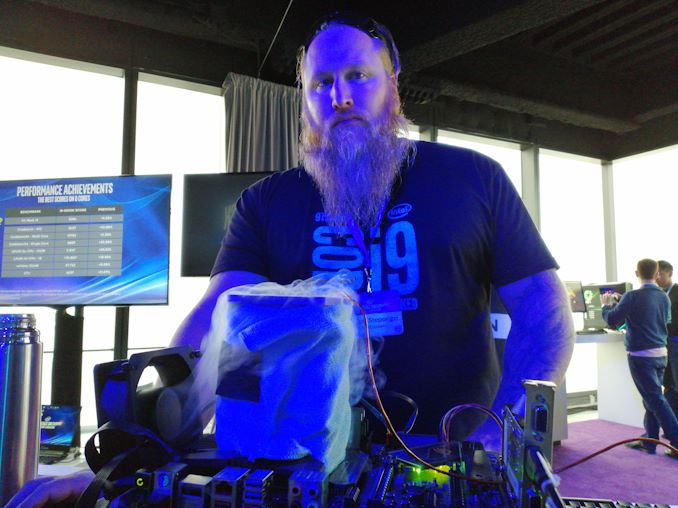
One of the prominent parts of Intel’s announcement this week for the new 9th Generation core processors was that both the overclockable consumer processors and the new high-end desktop processors all feature a soldered thermal interface material (STIM) between the silicon die and the heatspreader. This is a vast improvement over the previous thermal interface material due to the solder's superior ability to conduct thermal energy away from the silicon die. As part of the announcement, Intel also engaged in some extreme overclocking at its launch event using Liquid Nitrogen as an effective coolant, and some overclocking world champions.
Choosing A Thermal Interface Material (TIM)
With the desktop processors we use today, they are built from a silicon die (the smart bit), a package substrate (the green bit), a heatspreader (the silver bit), and a material that helps transfer heat from the silicon die to the heatspreader. The quality of the binding between the silicon die and the heatspreader using this thermal interface material is a key component in the processors ability to remove the heat generated from using it.
Traditionally there are two different types of thermal material: a heat conductive paste, or a bonded metal. Both have positives and negatives.
The heat conductive paste is a universal tool – it can be applied to practically any manufactured processor, and is able to deal with a wide range of changing conditions. Because metals expand under temperature, when a processor is used and gets hot, it expands – so does the heatspreader. The paste can easily deal with this. This allows paste-based processors to live longer and in more environments. Using a bonded metal typically reduces the level of thermal cycling possible, as the metal also expands and contracts in a non-fluid way. This might mean the processors has a rated lifespan of several years, rather than a dozen years. However, the bonded metal solution performs a lot, lot better – metal conducts heat better than the silicon-based pastes – but it is slightly more expensive (a dollar or two per unit, at most, when the materials and manufacturing are taken into account).
| Thermal Interface | |||||||
| Intel | |||||||
| Intel | Celeron | Pentium | Core i3 | Core i5 | Core i7 Core i9 |
HEDT | |
| Sandy Bridge | LGA1155 | Paste | Paste | Paste | Bonded | Bonded | Bonded |
| Ivy Bridge | LGA1155 | Paste | Paste | Paste | Paste | Paste | Bonded |
| Haswell / DK | LGA1150 | Paste | Paste | Paste | Paste | Paste | Bonded |
| Broadwell | LGA1150 | Paste | Paste | Paste | Paste | Paste | Bonded |
| Skylake | LGA1151 | Paste | Paste | Paste | Paste | Paste | Paste |
| Kaby Lake | LGA1151 | Paste | Paste | Paste | Paste | Paste | - |
| Coffee Lake | 1151 v2 | Paste | Paste | Paste | Paste | Paste | - |
| CFL-R | 1151 v2 | ? | ? | ? | K = Bonded | - | |
| AMD | |||||||
| Zambezi | AM3+ | Bonded | Carrizo | AM4 | Bonded | ||
| Vishera | AM3+ | Bonded | Bristol R | AM4 | Bonded | ||
| Llano | FM1 | Paste | Summit R | AM4 | Bonded | ||
| Trinity | FM2 | Paste | Raven R | AM4 | Paste | ||
| Richland | FM2 | Paste | Pinnacle | AM4 | Bonded | ||
| Kaveri | FM2+ | Paste / Bonded* | TR | TR4 | Bonded | ||
| Carrizo | FM2+ | Paste | TR2 | TR4 | Bonded | ||
| Kabini | AM1 | Paste | |||||
| *Some Kaveri Refresh were bonded | |||||||
In our Ryzen APU delidding article, we went through the process of removing the heatspreader and conductive paste from a popular low cost product, and we showed that replacing that paste with a bonded liquid metal improved temperatures, overclocking, and performance in mid-range overclocks. If any company wants to make enthusiasts happy, using a bonded metal is the way to go.
Intel on Enthusiasts
For several years, Intel has always stated that they are there for enthusiasts. In the distant past, as the table above shows, Intel provided processors with a soldered bonded metal interface and was happy to do so. In recent times however, the whole product line was pushed into the heat conductive paste for a number of reasons.

Slide for Intel's 4th Gen, which used paste
As Intel was continually saying that they still cared about enthusiasts, a number of users were concerned that Intel was getting itself confused. Some believed that Intel had ‘enthusiasts’ and ‘overclockers’ in two distinct non-overlapping categories. It is what it is, but now Intel has returned to using applying STIM and wants to court overclockers again.
Pushing Frequencies with Liquid Nitrogen
I should be safe in saying that most AnandTech readers understand that in order to push an overclock, bigger and better cooling is required. This might mean a good air cooler, water cooling, or if you want an exotic daily system, chilled water. The idea here is that as the voltage and frequency is raised, more exotic cooling is required to keep the system from overheating. Beyond chilled water, there are a bunch of enthusiasts that use sub-zero coolants.
Competitive overclocking is an industry to which I am relatively intimate: I have at some point in my existence hit #2 in the world rankings, albeit briefly. The nature of the extreme overclocking scene has changed from very motivated enthusiasts and engineers to vendor backed individuals with thousands of dollars in hardware trying to get the very highest frequency, or break particular benchmark world records. It comes down to experience, preparation, and a good amount of luck to get the best hardware and the best results in the world.
For example, the high-frequency world record on an AMD processor is 8794.33 MHz, using a FX-8350 under liquid nitrogen, whereas the Intel record is 8532.17 MHz on a Celeron 352. Each processor runs differently when you get down to -196C, and some of the older processors were better at pushing the envelope. But while newer processors might not clock as high, the additional cores and raw per-MHz performance help push the benchmarking part of the world records higher.
So while a good air overclock on a high-end gaming processor like the Core i7-8086K is around 5.4 GHz, under liquid nitrogen Intel’s hired guns on the day were pushing 6.9 GHz with the latest 9th generation Core i9-9900K on all cores, and reaching 7.1 GHz internally, with up to 7.4 GHz on a single core. Given that the chip is new, there are usually a good couple of months of learning a new platform and chip binning to push it as high as the previous generation, so we’re likely to see higher over the coming months.
The two overclockers hired by Intel, known in the community as Splave and Steponz, were happily breaking records for 8-core processors left right and center for various CPU focused tests. They also achieved at least one ‘global’ world record, beating every other processor that has ever existed, in PCMark 10.
For a few other tests, Intel achieved some best ever 8-core results.
What’s the point?
Not everyone is going to run liquid nitrogen on their system. Not only is the cooling setup a disaster to maintain 24/7, as well as expensive, the inherent instability in the system at this frequency and the tuning required isn’t practical as it requires constant tweaking. Extreme overclocking is often compared to drag racing – to see who can go the quickest quarter mile. There are several parallels – going for the highest frequency might be just a peak speed contest, while running a complex benchmark is more akin to Formula 1. There are users that have been competitive overclocking for decades, and for a select few, it has become a career that has ended up with motherboards that offer new features that everyone who wants to can use. Sure, it isn’t as useful as taking a family saloon to the shops, but it is fun to watch them go.
Related Reading
- Overclocking The AMD Ryzen APUs: Guide and Results
- The Intel Skylake i7-6700K Overclocking Performance Mini-Test to 4.8 GHz
- AMD Ryzen 5 2400G and Ryzen 3 2200G Integrated Graphics Frequency Scaling
- Delidding The AMD Ryzen 5 2400G APU: How To Guide and Results
- EVGA Roboclocker: A Water Cooling Loop for LIQUID NITROGEN
- GIGABYTE’s Liquid Nitrogen Memory Overclocking Motherboard, Z97X-SOC Force LN2
- Thermal Interface and Extreme Overclocking on the Core i7-8086K (with Alva Jonathan)



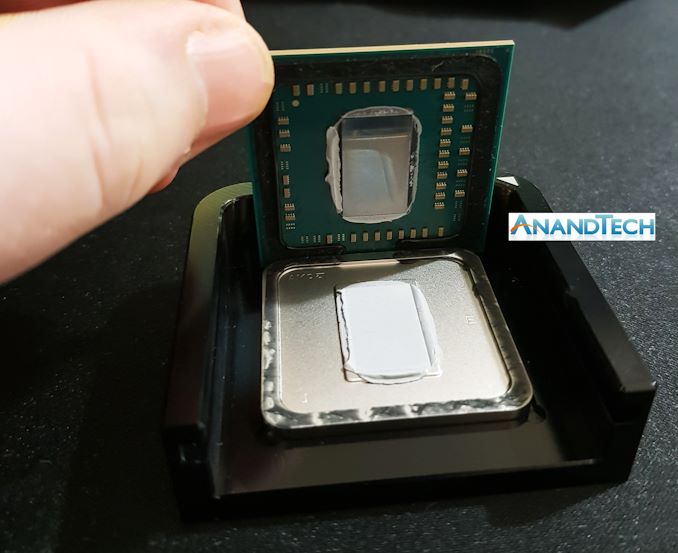
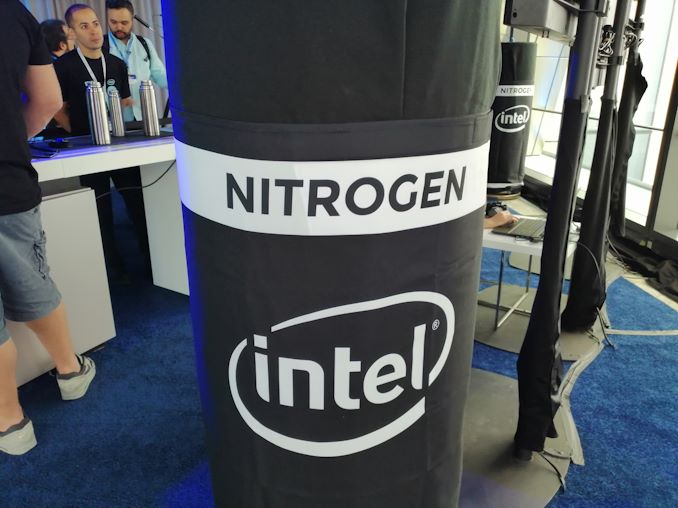
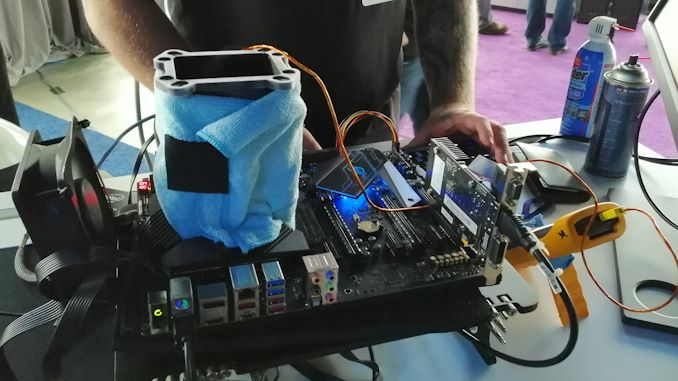
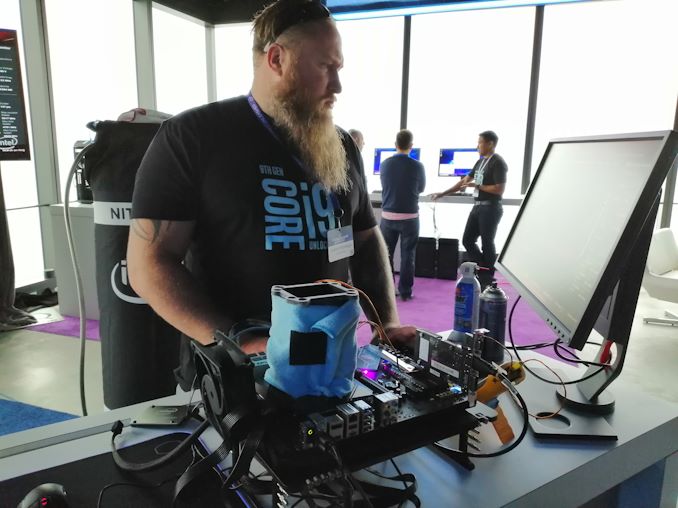
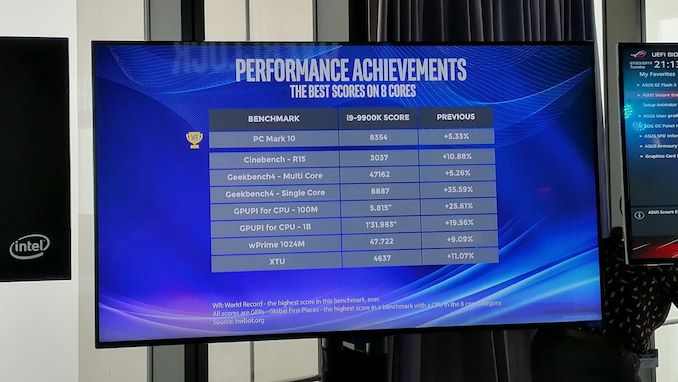








54 Comments
View All Comments
gavbon - Thursday, October 11, 2018 - link
Soldered TIM > that abhorrent cheap paste they usually useyeeeeman - Thursday, October 11, 2018 - link
At 500$ there is not one single reason why anyone would buy this CPU. For multithreaded stuff you can buy a 1920X with 12 cores and 24 threads at 450$ and get much better performance. For ST or gaming you can buy a 300$ 2700X or a 8700K/9700K. They need to lower the price, otherwise this product is no good.SirMaster - Thursday, October 11, 2018 - link
No reason?You just said that if you want multi-thread to get threadripper, and for single thread to go with lesser thread count or the cheaper AMD.
What about if you want both? I play games many hours a week but I also do content creation on my PC (rendering, encoding, etc) and I am a heavy overclocker. I push my stuff to the max on water cooling.
I feel like the 9900K is perfect for me.
nevcairiel - Friday, October 12, 2018 - link
I fully agree with that. Everyone is ignoring enthusiasts that both work and game on the same machine, because why not. Personally I'm not going to get a 9900K though, but if Ice Lake on 10nm has an equivalent part, I might get that one.JoeyJoJo123 - Thursday, October 11, 2018 - link
I think it's too expensive too, but there is a market out there.Premiere cares more about per-core frequency than having tons of threads, but it also cares about threads as well. The iGPU can also be used in some applications to speed up rendering times for video. For a workstation whose express purpose is to edit video, the 9900k makes sense if time is money and they're in a daily business of making video content (YouTube/Twitch/whatever) and a day of not meeting a deadline of an upload means lost traction in the video space.
It's a niche, but it exists and the processor can be the best of the best for some applications. As with all things, end consumers need to operate and decide their parts on a fixed budget and stick to the best parts they can fit under the budget they have. And for most people, yeah $500 on the CPU alone is way outside of budget, and that's fine.
But yes, I do want Intel to drop their prices here. They're always pricing this jank under the "supposition" that they'll cannibalize other product stacks, but the fact is if someone needed enthusiast board features, they'd go for the enthusiast chipset and processor. If someone just wants mainstream features they'll stick to the mainstream product.
nerd1 - Thursday, October 11, 2018 - link
Obviously you have no idea.9900K is guaranteed to turboboost to 5Ghz, which means it will be reliably overclocked to 5.3~4Ghz. That is 20~30% faster than ANYTHING AMD has. In short, 9900K will be much faster than ANY AMD processor (including 32 core threadripper) for tasks that uses less than 16 threads, which is 99.9% of all the single user applications.
Fritzkier - Thursday, October 11, 2018 - link
Why not just buy 8700k?Samus - Thursday, October 11, 2018 - link
I agree the 8700K and even the 8700 are both significant alternatives, but the point of the 9th Gen's improvements, according to this article, focus on the TIM. Since they are soldered they will run significantly cooler, even at stock.Targon - Friday, October 12, 2018 - link
Isn't the all-core boost only going to 4.8GHz without manually overclocking on the 9900K? Going to 5.2-5.3GHz I can see as well. Ryzen 3rd generation should also be hitting the 5GHz on 8 core/16 thread without a problem when it comes out in March/April of 2019, but beyond that, I won't speculate how high it will be able to clock without more information.Samus - Thursday, October 11, 2018 - link
What if you are doing video decoding\encoding, and need Quick Sync?Just one of many common scenerios someone would need a high-power Intel CPU with an iGPU (Xeon CPU's - at least all of the previous ones with disabled iGPU's, do NOT support Quick Sync)